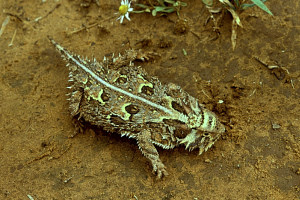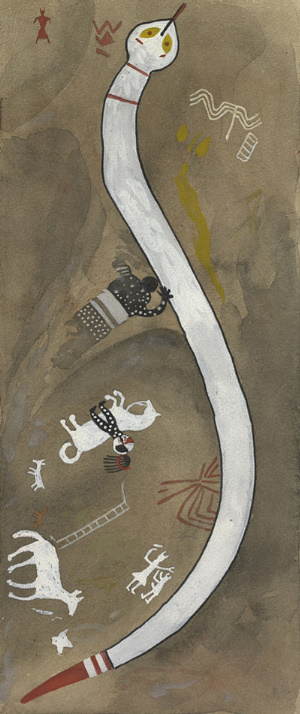Reptiles
Snakes, lizards, frogs, and turtles were all regular dinner items for the native peoples of the Trans-Pecos. Many reptiles are even easier to capture than rodents, being cold-blooded and characteristically slow. Water turtles, for instance, spend many hours out of the water sunning themselves on rocks. These and other reptiles could be caught with minimal effort by netting, gigging, pounding them with a stick, or simply picking them up with bare hands. Like rodents, lizards were sometimes eaten whole: skin, bones, and all, and other small reptiles were probably eaten with minimal preparation.
To cite only a few examples, Both western box turtle (Terrapene ornata) and softshell turtle (Trionyx sp.) have been found at Hueco Tanks, western diamondback rattlesnake (Crotalus atrox) has been found at Hueco Tanks and Granado Cave, Texas horned lizard (Phrynosoma cornutum) and toad (Bufo sp.) have been found at Gobernadora, and an array of unidentifiable lizards and snakes have been found at Gobernadora, Turquoise Ridge, and Granado Cave as well as sites in the Big Bend.
Reptiles provided more than just meat to the prehistoric peoples of the Trans-Pecos. Turtles were valued for their shells, which were used as containers, shields, and even musical instruments. Rattlesnake rattlers were also desirable items. A rattle made of 27 rattlesnake rattlers and 3 rattlesnake fangs was recovered from Granado Cave. This item is thought to have been ceremonial in nature. Retiles have even been depicted in the rock art of the region.

